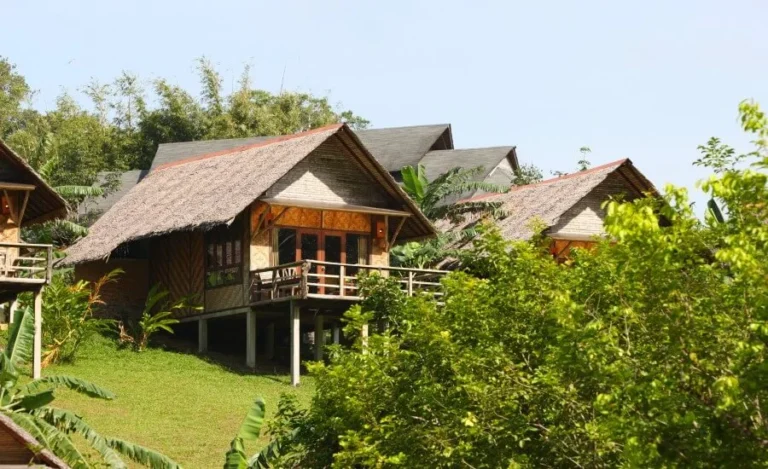
There’s a certain pull, unsettling yet undeniable, towards places marked by darkness. Sites like Chernobyl, Auschwitz, the Killing Fields of Cambodia, or Ground Zero in New York exert a strange fascination. We feel drawn to locations defined by death, disaster, suffering, or atrocity. But standing on ground saturated with tragedy inevitably raises profound questions. Is it right to visit? Is our presence educational, commemorative, or merely voyeuristic? When does exploration cross the line into exploitation, especially when considering destinations sometimes deemed “off-limits”?
This journey into the shadows of human experience is often termed Dark Tourism. Its growing popularity necessitates a critical examination of its ethical landscape. Is Dark Tourism Ethical? There’s no easy answer. It exists on a complex spectrum, fraught with potential pitfalls but also holding possibilities for profound learning and remembrance. This post aims to navigate this challenging terrain, exploring the motivations behind dark tourism, its potential positive and negative impacts, and offering guidelines for engaging with these difficult heritage sites in a manner that prioritizes respect, reflection, and responsibility.
Defining the Darkness: Understanding Dark Tourism’s Spectrum
The term “Dark Tourism” was explored by academics like Foley and Lennon in the 1990s and further developed by researchers like Dr. Philip Stone of the Institute for Dark Tourism Research. It generally refers to visitation to places associated with death, disaster, suffering, atrocity, or the macabre. However, it’s not a monolithic category. Dark tourism exists on a spectrum:
- “Darkest” Sites: Locations directly associated with mass death, genocide, or catastrophe, where the primary focus is the tragic event itself (e.g., Auschwitz-Birkenau, Murambi Genocide Memorial Centre, Chernobyl Exclusion Zone).
- Sites of Death & Remembrance: Cemeteries (like Père Lachaise), battlefields (Gettysburg, Normandy), assassination sites, memorials to victims of violence or disaster (Ground Zero Memorial, Hiroshima Peace Memorial Park).
- Sites of Incarceration/Punishment: Decommissioned prisons (Alcatraz, Robben Island), sites related to slavery or persecution.
- Disaster Tourism: Visiting areas affected by natural or man-made disasters (sometimes controversial, especially if recent).
- “Lighter” Dark Sites: Locations with historical associations with death or the macabre, often presented with less emphasis on tragedy (e.g., some historical dungeons, sites of famous accidents).
Motivations for visiting these sites are equally varied. They can range from a genuine desire for education and historical understanding, a need for remembrance and bearing witness, morbid curiosity, thrill-seeking or “danger tourism,” empathy development, confronting mortality, or even a form of secular pilgrimage. Understanding this spectrum and the diverse motivations is crucial for analyzing the ethical implications.
Why We Go: Potential Positives of Visiting Difficult Places
Despite the inherent sensitivities, visiting sites of tragedy can offer valuable, albeit somber, experiences when approached correctly. There are several potential justifications for engaging in dark tourism:
- Education and Historical Understanding: Standing on the ground where significant historical events occurred, particularly tragic ones, can provide a visceral understanding that books or documentaries cannot replicate. It can concretize history, making the past feel more real and its lessons more potent. Visiting Auschwitz, for example, offers irrefutable evidence of the Holocaust’s horrors.
- Memorialization and Bearing Witness: Visiting memorials or sites of loss can be a powerful act of remembrance, honoring victims and ensuring their stories are not forgotten. It allows visitors to bear witness to past suffering, acknowledging its reality and significance in the human story.
- Empathy and Perspective: Confronting evidence of past suffering or injustice can foster empathy and compassion. It can prompt reflection on human nature, resilience, and the fragility of peace, potentially leading to a greater appreciation for one’s own life and a stronger commitment to preventing future atrocities.
- Supporting Communities (When Applicable): In some cases, responsible tourism can provide vital economic support for local communities managing difficult heritage sites, funding preservation, education programs, or providing alternative livelihoods. This must, however, be balanced against the risk of exploitation and should align with the community’s wishes.
- Confronting Difficult Truths: Dark tourism can encourage engagement with uncomfortable aspects of history and human behavior, prompting necessary conversations about violence, injustice, and societal responsibility.
When undertaken with genuine respect and a focus on learning and remembrance, visiting these sites can be a profoundly moving and educational experience.
The Ethical Minefield: Voyeurism, Exploitation, and Disrespect

The ethical landscape of dark tourism is treacherous. The line between respectful remembrance and morbid curiosity, or between education and entertainment, can be perilously thin. The risks are significant:
- Trivialization: Treating sites of immense suffering as mere tourist attractions or, worse, as backdrops for inappropriate selfies or social media posts, diminishes the gravity of the events and disrespects the memory of victims.
- Voyeurism: Visiting out of morbid curiosity without any attempt at deeper understanding or reflection can feel like intruding on private grief or profiting emotionally from others’ suffering.
- Disrespectful Behavior: Loud talking, laughing, inappropriate attire, ignoring rules and regulations, or failing to show solemnity demonstrates a profound lack of respect for the site’s significance and those affected by the events.
- Exploitation: Tour operators or local vendors might exploit tragedy for profit without sensitivity or proper historical context. Visitors might also exploit vulnerable local populations in disaster zones for “poverty tourism” experiences.
- Inaccuracy and Sensationalism: Some tours or representations might focus on sensational details, omit crucial context, or misrepresent history to create a more “exciting” or palatable narrative, undermining genuine education.
- Safety Risks: Some “off-limits” destinations, like active disaster zones, unstable ruins, or contaminated areas (e.g., parts of Chernobyl), pose genuine physical dangers to visitors. Tourism might also interfere with ongoing recovery or investigation efforts.
- Psychological Harm: Exposure to graphic content or overwhelming evidence of suffering can be traumatic for visitors. Moreover, insensitive tourism can re-traumatize survivors, descendants, or local communities.
Navigating this minefield requires constant vigilance and a commitment to ethical conduct. Is your presence contributing to understanding and remembrance, or is it bordering on intrusion and disrespect?
Navigating Sensitivity: Guidelines for Ethical Dark Tourism

Engaging ethically with sites of death, disaster, or atrocity requires careful consideration and mindful conduct. If you choose to visit, adhere to these guidelines:
- Examine Your Intentions: Why do you want to visit this specific place? Is it for genuine learning, remembrance, and reflection, or is it driven by morbid curiosity or the desire for bragging rights? Be honest with yourself.
- Do Your Research: Before visiting, learn about the history and context of the site. Understand its significance, the events that occurred there, and the sensitivities involved. This preparation fosters respect and deeper understanding.
- Follow All Rules and Guidelines: Pay close attention to signage, instructions from guides, and site regulations regarding behavior, access, and photography. These rules exist for reasons of safety, preservation, and respect.
- Behave Respectfully: Maintain a quiet, somber demeanor. Avoid loud conversations, laughter, or running. Dress appropriately and modestly, as if attending a memorial service. Do not eat, drink, or smoke in inappropriate areas.
- Photography Ethics:
- Is photography allowed? Check rules first. Some sites prohibit it entirely or in specific areas.
- Why are you taking this photo? Is it for personal reflection, documentation, or social media validation?
- What/Who are you photographing? Avoid intrusive photos of grieving individuals or graphic remains. Never pose disrespectfully (e.g., smiling selfies at a concentration camp are completely unacceptable). Consider capturing atmosphere, details, or memorials rather than sensational images.
- How will you share it? If posting online, provide context and maintain a respectful tone. Avoid captions or hashtags that trivialize the site.
- Engage Thoughtfully: Listen attentively to guides (choose reputable, knowledgeable ones). Read informational displays. Take time for quiet reflection. Avoid treating the visit like entertainment.
- Support Wisely: If purchasing anything, choose informational materials (books, guides) over potentially exploitative or morbid souvenirs. If using a tour company, research their practices and ensure they operate ethically, respect the site, and benefit the local community fairly (if applicable).
“Off-Limits” Intrigue: Specific Ethical Considerations

The allure of Exploring Off-Limits Destinations – places restricted due to danger, political sensitivity, or recent tragedy – adds another layer of ethical complexity. Visiting places like the Chernobyl Exclusion Zone, parts of Fukushima, or recent natural disaster sites requires extreme caution and critical self-assessment.
Key questions arise: Does tourism interfere with ongoing recovery, aid efforts, or investigations? Does it pose unacceptable safety risks to visitors or rescue personnel? Is access legally and morally justifiable, or does it involve trespassing or exploiting loopholes? Is the motivation genuine interest or dangerous thrill-seeking? There’s a fine line between bearing witness and disaster voyeurism, or between appreciating unique environments and engaging in “ruin porn” that glamorizes decay without acknowledging human cost or risk. Often, “off-limits” means restricted for valid reasons concerning safety, respect for victims, or environmental protection. Prioritize these considerations over personal curiosity or the quest for unique travel photos.
Ethical Checklist for Potential Visitors
Before deciding to visit a dark tourism site, ask yourself these critical questions:
- Motivation: Why do I really want to go here? Is it primarily for learning, remembrance, or something else?
- Preparation: Have I researched the history, context, and sensitivities adequately? Am I prepared for the potential emotional impact?
- Respect: Am I committed to behaving respectfully, following all rules, and dressing appropriately?
- Community Impact: Does the site management or local community welcome respectful visitors? Does my visit benefit or potentially harm them? (Consider economic impact vs. intrusion).
- Photography: Is photography permitted and appropriate? How will I approach it respectfully?
- Contribution: Will my visit contribute positively (education, remembrance) or negatively (trivialization, exploitation)?
- Safety: Are there significant safety risks involved, and am I prepared for them? (Especially relevant for disaster/exclusion zones).
- Alternatives: Is visiting in person the most respectful or effective way to learn about this event/place, or could reading, donating to relevant causes, or visiting established museums/memorials be more appropriate?
When Not To Go: Recognizing Ethical Boundaries

Sometimes, the most ethical decision is simply not to visit. Avoid visiting dark tourism sites if:
- Your presence would interfere with active disaster relief, recovery efforts, or official investigations.
- The site is explicitly closed to visitors, or the local community/survivors have requested privacy.
- Your primary motivation is morbid curiosity, thrill-seeking, social media bragging, or collecting “dark” experiences.
- You are unable or unwilling to behave with the required level of respect, sobriety, and quietness.
- Your visit would likely cause significant distress to survivors, descendants, or the local community.
- Access involves illegal trespassing or puts yourself or others (like rescue services) at undue risk.
- The available tours or access methods seem exploitative, sensationalist, or historically inaccurate.
Conclusion: Traveling Through Shadowlands with Consciousness

The ethics of Dark Tourism are rarely black and white. Visiting sites associated with death and tragedy exists on a complex spectrum, demanding careful thought and deep respect. There is no universal ‘yes’ or ‘no’ to whether it is ethical; the answer depends heavily on the specific site, how it is managed, the context of the visit, and, crucially, the intention and conduct of the visitor.
When approached with genuine educational goals, a spirit of remembrance, and unwavering respect for victims and survivors, exploring these difficult places can be a powerful, perspective-shifting experience. However, the potential for harm – through trivialization, voyeurism, exploitation, and disrespect – is ever-present. Ultimately, the responsibility lies with each traveler to critically examine their motivations, prepare thoroughly, behave mindfully, and prioritize respect above all else. Choosing to visit the shadowlands of human history requires traveling not just with curiosity, but with consciousness.








